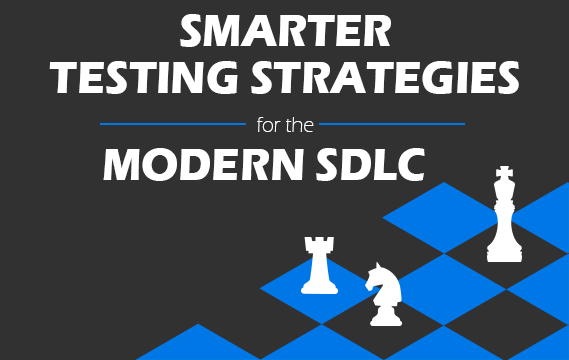Introduction
Keyword-driven testing is a software testing technique that separates much of the programming work of test automation from the actual test design. This allows tests to be developed earlier and makes the tests easier to maintain. Some key concepts in keyword driven testing include:
- Keywords, which are typically base level and describe generalized UI operations such as “click”, “enter”, “select”
- Business templates which are typically high level such as “login”, “enter transaction”
- Action Words, or short “Actions”, which can be both base level and high level and in their most general form allow earlier defined key words to be used to define higher level action words
Keyword driven testing is a very powerful tool helping organizations to do more automated testing earlier in the testing process and making it easier to maintain tests over time. As with any complex undertaking, there are “success factors” that can determine whether or not a testing effort will be successful. This paper will outline key success factors for keyword driven testing including base requirements, the vision for Automation, success factors for Automation, and how to measure success.
Base Requirements
There are numerous requirements that I consider to be “base requirements” for success with keyword driven testing. These include:
- Test development and Automation must be fully separated – It is very important to separate test development from test automation. The two disciplines require very different skills. Fundamentally, testers are not and should not be programmers. Testers must be adept at defining test cases independent of the underlying technology to implement them. Individuals who are skilled technically, the “Automation people” (Automation engineers), will implement the action words and then test them.
- Test cases must have a clear and differentiated scope – It is important that test cases have a clearly differentiated scope and that they not deviate from that scope.
- The tests must be written at the right level of abstraction – Tests must be written at the right level of abstraction such as the higher business level, lower user interface level, or both. It is also important that test tools provide this level of flexibility.
Vision for Automation
It is also important to have a clear vision for Automation. Such a “vision” should include things such as:
- Having a good methodology – It is important to have a good integrated methodology for testing and Automation that places testers in the driver’s seat. It is also important to employ the best technology that supports the methodology, maximizes flexibility, minimizes technical efforts, and maximizes maintainability.
- Have the right tool – Any tool that is employed should be specifically designed for keyword based testing. It should be flexible enough to allow for the right mix of high and low level testing. It should allow the testers to quickly build keyword tests, without difficulty. It should also not be overly complicated for Automation engineers to use when implementing the Automation.
- Succeed in the three “success factors for Automation” – There are three critical success factors for Automation that the vision should account for. They are:
- Test design
- Automation solution
- Organization
Success Factors for Automation
Test Design
Test design is more important than the Automation technology. Design is the most underestimated part of testing. It is my belief that test design, not Automation or a tool, is the single most important factor for Automation success. To understand more about test design see these previous articles:
Comprehensive Automation Architecture
An automation architecture should emphasize methodology over technology, manageability, and maintainability. The methodology should control and drive the technology so that technology supports the methodology and the importance of manageability and maintainability.
Organization and management
Organization and management are also very important. Success is highly dependent on how well you organize the process including:
- Management of the test process
- Management of the tests
- Efficient and effective involvement of stake holders, users, auditors
A plan of approach should be written for test development and automation. In it should be items such as:
- Scope, assumptions, risks
- Methods, best practices Tools, technologies, architecture
- Stake holders, including roles and processes for input and approvals
…and more.
The “right” team must also be assembled. This team should include:
- Test management who is responsible for managing the test process.
- Test development who is responsible for production of tests. Test development should include test leads, test developers, end users, subject matter experts, and business analysts.
- Automation engineering who is responsible for creating the Automation scheme for Automatic execution. Members of this team include a lead engineer as well as one or more Automation support engineers.
- Support functions, providing methods, techniques, know how, training, tools, and environments.
For the team there should be a clear division of tasks and responsibilities as well as well-defined processes for decision making and communication.
Some Tips to Get Stable Automation
- Make the system under test automation friendly. While developers are not always motivated to do that, it pays off. In particular ask development to add specific property values to the GUI interface controls for Automated identification like “accessible name” in .Net and Java, or “id” in Web controls
- Pay attention to timing matters. In particular use “active timing”, based on the system under test, not fixed amounts of “sleep”.
- Test your Automation. Develop a separate test set to verify that the actions work. Make separate people responsible for the Automation.
- Use Automation to identify differences between versions of the system under test
How to Measure Success
With any major undertaking, it is important to define and measure “success”. There are two important areas of measurement for success – progress and quality.
Progress
You should measure test development against the test development plan. If goals are not reached, act quickly to find the problems. Is the subject matter clear? Are stake holders providing enough input? Is it clear what to test (overall, per module)? Is the team right (enough, right skill set mix)?
You should measure Automation and look at things such as implemented keywords (actions) and interface definitions (defined interface dialogs, pages, etc).
You should measure test execution looking at things such as how many modules are executed and how many executed correctly (without errors)?
Quality
Some of the key quality metrics include:
- Coverage of system and requirements
- Assessments by peers, test leads, and by stake holders (recommended)
- Effectiveness
- Are you finding bugs?
- Are you missing bugs?
- Can you find known bugs (or seeded bugs)?
- After the system is released, what bugs still come up? You should consider calculating the “Defect Detection Percentage” (Dorothy Graham, Mark Fewster)
- Mine your bug base for additional insights
Conclusion
It is important to understand that keywords are not magic, but they can serve you well. What is more important is to take the effort seriously and “do it right”. Doing it right means that test design is essential, both global test design and the design of individual test cases. Automation should be done but it should not dominate the process. Automation should flow from the overall strategy, methodology, and architecture. It is also very important to pay attention to organization – the process, team, and project environment.
Following the success factors outlined in this paper can lead to a successful implementation of keyword driven testing.



















